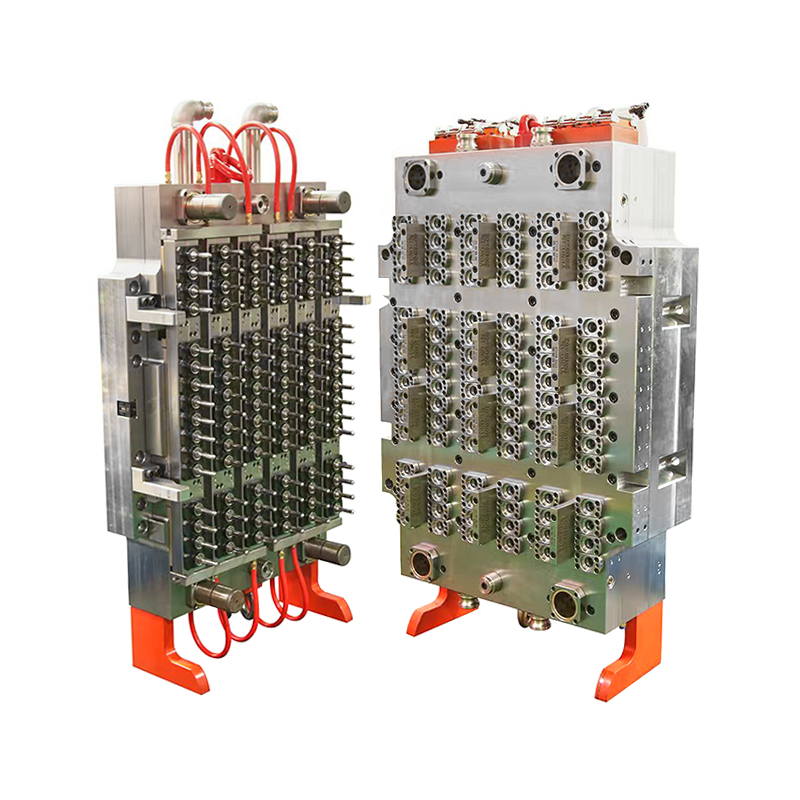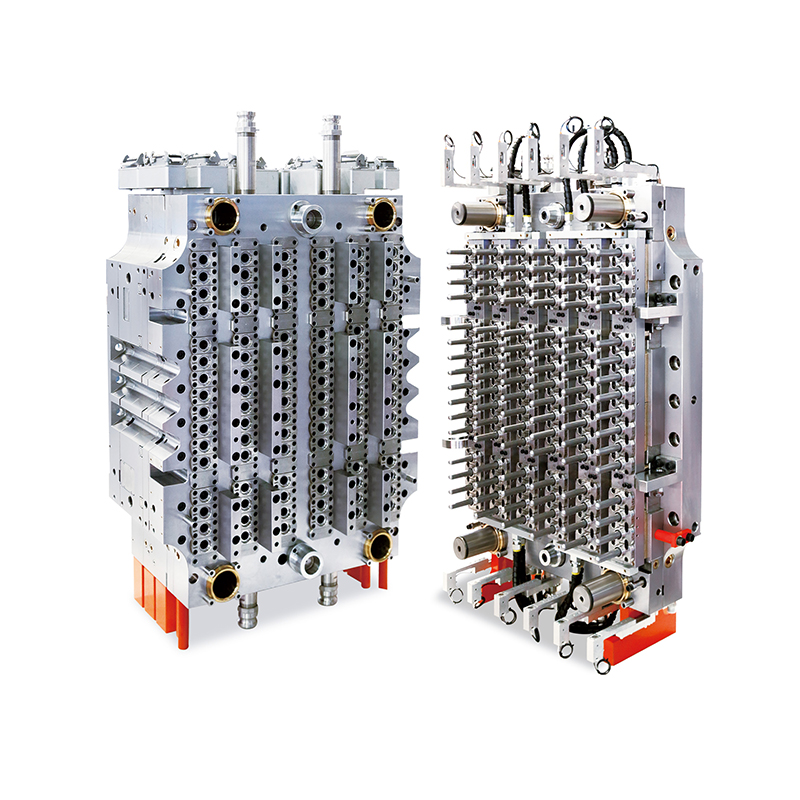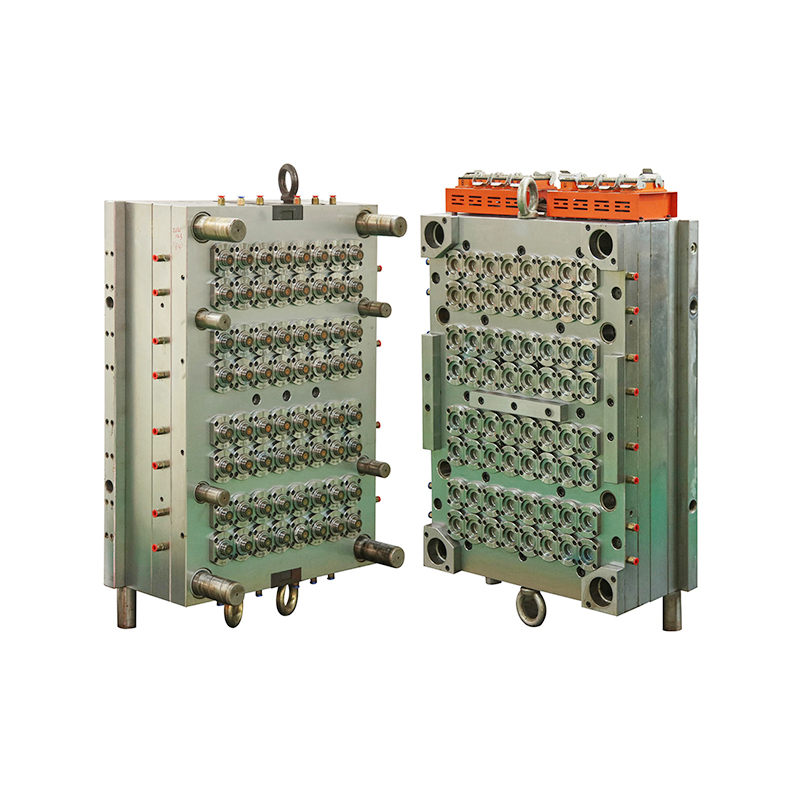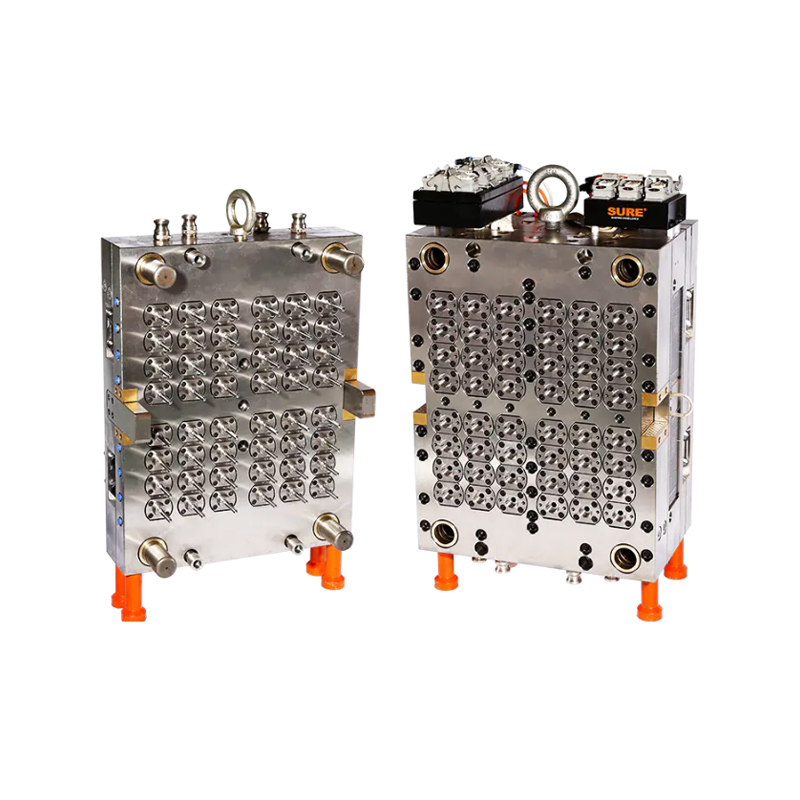No.148 Yongda Road, Jiangkou Street, Huangyan, Taizhou, Zhejiang, China.
Jar preform moulds are essential tools in the production of plastic jars, used across the food, beverage, cosmetic, and pharmaceutical industries. These moulds are designed to shape plastic preforms, which are then blown into final jar forms using blow moulding processes. By ensuring uniformity, precision, and efficiency, jar preform moulds play a crucial role in high-quality container manufacturing.
The primary function of a jar preform mould is to give plastic preforms their initial shape and dimensions. Typically, preforms are made from polyethene terephthalate (PET) or other thermoplastic materials. The plastic is heated and injected into the mould cavity, where it cools and solidifies into a precise cylindrical shape with a threaded neck that matches the final jar closure. This preform ensures that the subsequent blow moulding process produces jars with consistent wall thickness, capacity, and structural integrity.
One of the main advantages of jar preform moulds is their ability to produce high-precision preforms efficiently. Modern moulds are engineered with multiple cavities, allowing the simultaneous production of several preforms in a single injection cycle. This increases production rates, reduces manufacturing costs, and maintains uniformity across batches. Accurate mould design also small material waste and ensures consistent weight distribution in preforms, which is critical for the stability and durability of the finished jars.
Jar preform moulds are made from high-quality steel or aluminium, materials chosen for their durability, thermal conductivity, and resistance to wear. Proper heat management within the mould ensures uniform cooling of preforms, reducing the risk of defects such as warping, uneven thickness, or surface imgoodions. Regular maintenance, including cleaning and inspection, helps maintain good performance and prolongs the lifespan of the mould.
Design flexibility is another key feature of jar preform moulds. Moulds can be customised to produce preforms of various sizes, shapes, and neck finishes, accommodating different jar designs and industry requirements. Whether producing small cosmetic jars, large food containers, or speciality pharmaceutical bottles, manufacturers can adjust cavity dimensions, neck threads, and wall thicknesses to meet specific standards. Some moulds also allow for quick changeovers, enabling production of multiple jar types with small downtime.
The use of jar preform moulds also supports quality control and consistency. Precise mould tolerances ensure that all preforms meet specified dimensions, contributing to the uniformity of the final jars. This reduces the risk of defects during blow moulding and ensures reliable performance in filling, sealing, and labelling operations. Consistency is particularly important for products that require airtight sealing, such as food jars or medical containers.
Efficiency, durability, and precision make jar preform moulds indispensable in the plastic container industry. They streamline production, reduce material waste, and enable the creation of uniform, high-quality jars that meet industry standards. Proper handling, regular maintenance, and careful design selection ensure that these moulds continue to deliver reliable results over long production cycles.
Overall, jar preform moulds are a critical component in plastic jar manufacturing, combining engineering precision with production efficiency. By shaping preforms accurately and consistently, these moulds facilitate the creation of durable, functional, and visually appealing containers suitable for a wide range of industries. Effective use and maintenance of jar preform moulds support both quality and productivity in modern packaging operations.


 英语
英语 法语
法语

















